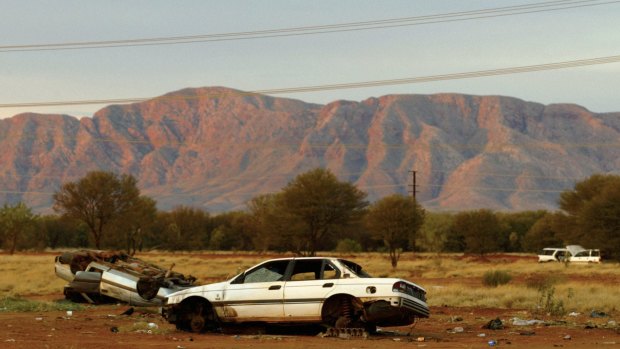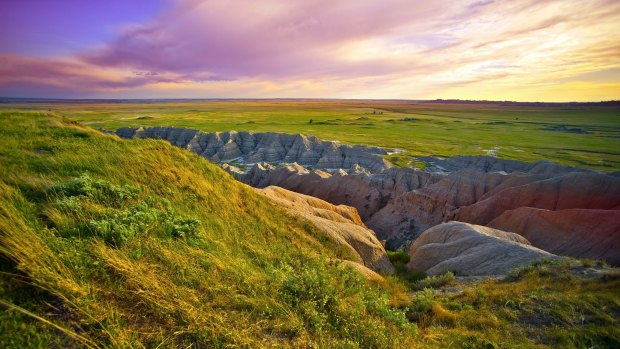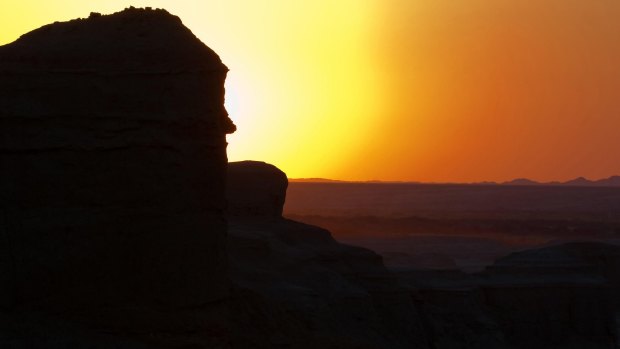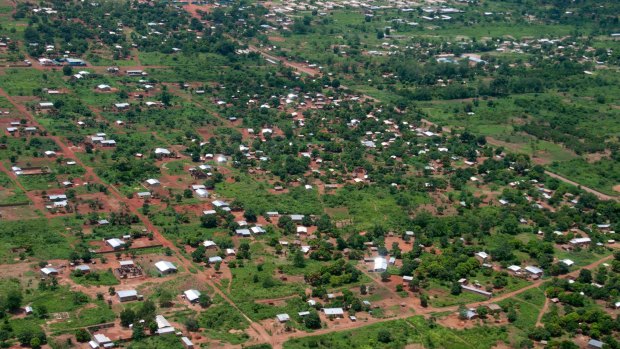This was published 6 years ago
The world's 'Poles of Inaccessibility' and what you will find there

Papunya, Northern Territory, the closest town to Australia's Pole of Inaccessibility. Credit: John Donegan
If ever you've thought a poorly signposted bar in a Melbourne laneway is hard to get to, or that arriving at a Pacific island resort requires a huge expedition, you're dealing with baby steps. Truly difficult-to-reach places require much more effort.
But how do you define the most difficult-to-reach places? Well, it's always going to be subjective, but one measurement is the Pole of Inaccessibility. In short, this is the place furthest from the coast on any continent – or the place in the oceans that is furthest from land.
Obviously, this doesn't take into account the locations of cities or roads – and there is considerable debate over whether estuaries and gulfs count as coast or inland – but it's as good a measure as any. And for some, reaching these poles is an irresistible challenge …
The Australian Pole of Inaccessibility
Of all the continental Poles of Inaccessibility, the Australian one is the easiest to reach. There are two contenders, which are pretty much next to each other in the heart of the Northern Territory, 920km from the coast. The nearest settlement is Papunya, which lies 30km to the south-west. The Tanami Track and Lake Lewis are just to the north-east. It's easy enough to get there with a 4WD along the dirt track.
The North American Pole of Inaccessibility

Credit: Shutterstock
Allen in North Dakota is the closest town to the North American Pole, which is 1650km from the coast and lies in a woodland gully inside the Pine Ridge Reservation. It's a short walk from the road – and, by the standards elsewhere, is easy enough to tick off. Allen's about 11km to the south, with the Nebraska border not too much further.
The South American Pole of Inaccessibility
Making the effort to get to the South American pole seems like an exercise in pointlessness when you realise where it is. The state of Mato Grosso in the centre of Brazil is hardly one that features much in tourism promotions, and the pole is in the middle of some tremendously mundane fields just to the north-west of Arenápolis. It is, however, a lonely 1504km from the distant ocean.
The Eurasian Pole of Inaccessibility

The Gurbantünggüt Desert, China.Credit: Alamy
There's no point in pretending Europe's a separate continent here – if you're looking for the furthest point from land, you're going to end up in the wild west of China, in the Gurbantünggüt Desert near the border with Kazakhstan. The problem is that there are three contested options for where the pole actually is. The first option relies on the Gulf of Ob in the Arctic Ocean being classed as an estuary and thus being inland, but a 2007 study decreed that it's not, and is part of the ocean, stretching about 960km inland.
This study then decided there were two alternative poles EPIA1 and EPIA2, which are just under 2500km from the ocean, but which is correct depends on what you classify as ocean. Urumqi to the east is the nearest major population centre.
The African Pole of Inaccessibility

Obo, Central African Republic. Credit: Alamy
Ramping up the difficulty levels considerably is the African Pole, which is 1814km from the coast. It lies just inside the Central African Republic very close to the border with South Sudan and the Democratic Republic of the Congo. It's tucked in a mountainous, heavily forested and – probably more importantly – rather fighty region. But Obo, to the south-east, is the nearest town if you fancy a very difficult hike …
The Southern Pole of Inaccessibility
Measuring the Southern Pole of Inaccessibility is made fiendishly tricky by the sheer amount of ice. Do you measure from the permanent landmass, or do you include the (variable) ice packs as well? This, of course, leads to various alternatives that the people who like to fight about such things are happy to argue over.
But the de facto Pole is where the Soviet Union decided to set up the Pole of Inaccessibility Station in 1958, presumably as a piece of Cold War bravado. Only one hut remains, along with a now-snow-covered bust of Lenin, which was deliberately placed to face Moscow.
It is regarded as considerably tougher to get to than the South Pole, 800km away, although a team led by British explorer Henry Cookson reached it without any direct mechanical assistance in 2007.
The Northern Pole of Inaccessibility
The Northern Pole is even trickier to pinpoint than the Southern Pole, because there is no permanent landmass around the North Pole and icesheets are both moving and melting. Importantly, it's not the part of the ice sheet furthest from the sea – it's the point in the Arctic furthest from land. The most recent estimate of where it is places it 450km from the North Pole, but this is prone to change. No-one has ever been there, though, which makes it one of the last great exploration firsts. British adventurer Jim McNeill has tried twice, and is now getting ready for a third go.
The Oceanic Pole of Inaccessibility
Also known as Point Nemo, the Oceanic Pole of Inaccessibility is the furthest point on Earth from land. And you're going to need your own boat plus plenty of time to get there, because it's in the middle of the Pacific Ocean. Calculated in 1992 using computer software, Point Nemo is equidistantly a smidge over 1600km from Ducie Island (part of Pitcairn), Motu Nui of the Easter Island archipelago and Maher Island off the coast of Antarctica.
See also: Ten remote islands to put on your bucket list
See also: Australia's most remote territories and how to visit them
Sign up for the Traveller Deals newsletter
Get exclusive travel deals delivered straight to your inbox. Sign up now.